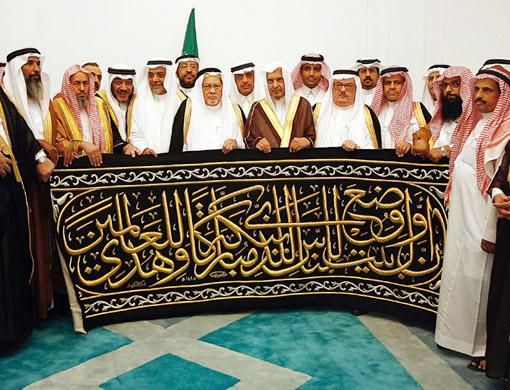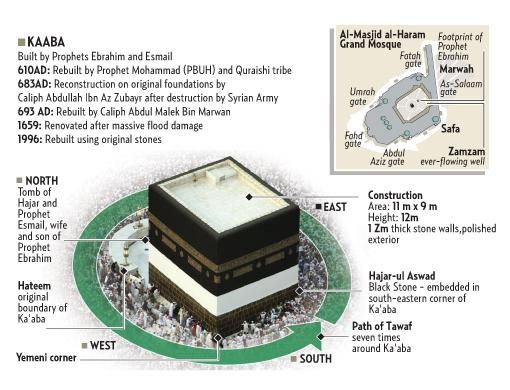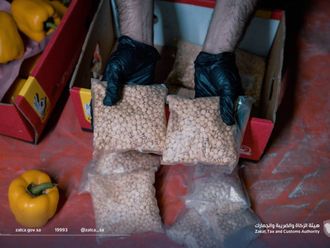Makkah: Shaikh Saleh Bin Abdul Rahman Al Hussain, head of the Presidency for the Affairs of the Two Holy Mosques, will hand over the new cover or kiswa of the holy ka'aba to Abdul Aziz Al Shaibi, senior keeper of the ka'aba on Saturday.
Marking this year's Haj season, the hand over ceremony will be held at the kiswa factory, located in the Makkah suburb of Ommul Joud.
The ka'aba is draped in a new kiswa - a specially adorned black silk cloth covering the entire structure - every year during the Haj.
The kiswa is made up of three parts: a sitaar (curtain) of the ka'aba door, an inner lining curtain inside the ka'aba and a hizam (the belt).
The kiswa consists of 47 pieces of cloth and each piece is 14 metres long and 101 cm wide. The Kiswa is wrapped around the ka'aba and fixed to the ground with copper rings.
The kiswa is made of approximately 670kg of pure white silk, which is later dyed black, and around 150kg of gold and silver.
The holiest shrine in Islam will be adorned with the new cover on Arafat Day, Dhul Hijjah 9, marking the climax of Haj.
This will be preceded by the customary washing of the ka'aba. The Makkah Governor leads the ka'aba washing ceremony twice a year, once before Ramadan and once during the Haj.
The interior of the ka'aba will be washed with zamzam and rose water.
The kiswa hand-over ceremony will be attended by Mohammad Al Khozaim, Vice-President of the Presidency, Ziyad Bin Muhyaddin Khoja, general supervisor of the kiswa factory, and the Haram Mosque's keepers.
An official kiswa factory was established during the reign of King Abdul Aziz. Before that period, the kiswa used to be brought by caravans of Haj pilgrims from countries like Egypt, Sudan, Morocco or Syria.
The kiswa costs more than 20 million Saudi riyals (Dh19.60 million) and is considered one of the most exquisite works of Islamic art. Expert artisans embroider the cloth with gold and silver threads to create calligraphy using verses from the Quran.
Skilled craftsmen use a combination of the latest technology, ancient looms and artistic calligraphy to produce a work of exotic beauty.













